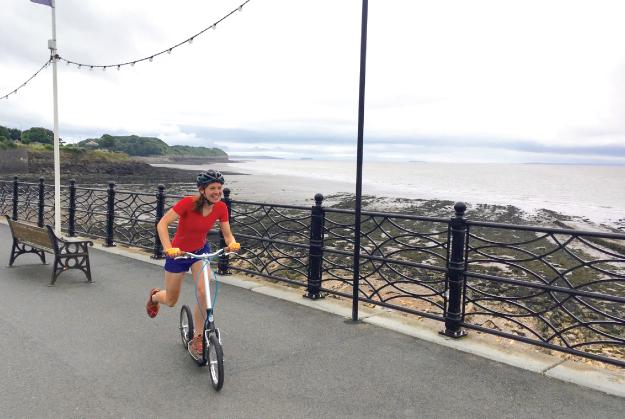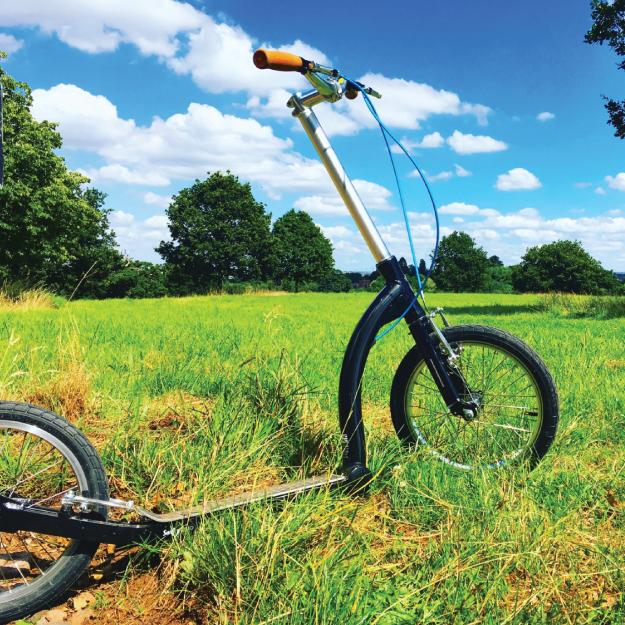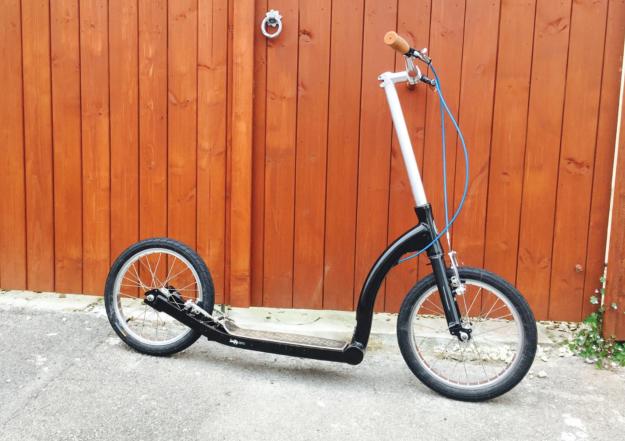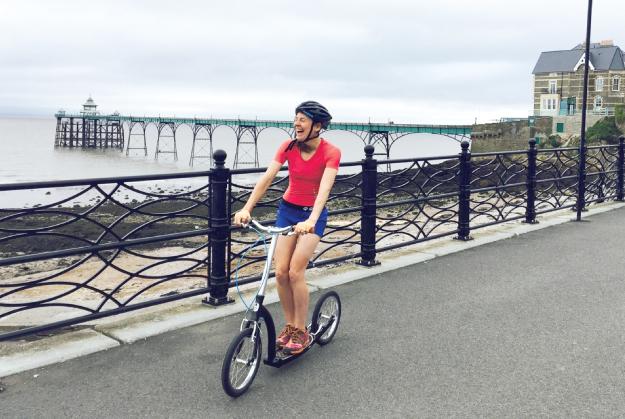
Your Bottom Needs A Scooter!
With the endless hours spent sat on our posteriors that modern life brings, anything we can do to wake up the glutes is good. But all too often, strength work is a bit of a bore.
As a cyclist, I’m no stranger to shouting “yeaaaaaas! My bum’s working!” when I feel my glutes burning. But whilst cycling is indeed good for the rear, it’s not a given that your posterior will get the work out that your calves, quads and hammies will enjoy from hours in the saddle— you have to be on the right profile (steep incline!) and in the right position (and not granny-gear!) to find that bun-burning-sweet-spot.
Cycling is more likely to give you tight hips than a tight toush, yet glute strength can go a long way to counteracting the hip-flexor issues that are common amongst us pedal-lovers. So when I heard about adult scooters, and their potential glute and core benefits, I was up for giving it a whirl.
Summertime and the scooting is eeeeeasy(ish)
“Oh dear. Your glutes are lazy”, said my sports therapist Chris Kay of Bristol Physiotherapy. “Charming”, I said, giving my rear a pat as if to say “there, there, don’t listen to what the mean man says about you.” But Chris was entirely right, just as he was when he told me not to run a marathon and then cycle 200 miles home from Paris the next day. I didn’t listen. Truth is, I’ve been told I’ve got a lazy bum by sports coaches and personal trainers for years, for some reason my rear just doesn’t want to get into gear…
“Would scooting give my backside the extra kick-up-the-wotsit that it so desperately needed?” I pondered. And importantly, would scooting be as much fun as those kids with the perma-glee faces would have me believe?
The perils of ‘lazy-bum syndrome’
You might be forgiven for thinking that having a lazy bottom isn’t exactly up there with the quest for world peace. But as a triathlete, having a sleeping cushion for a gluteus maximus, medius and let us not forget minimus, is not good, because it can cause injuries due to the compensation and dominance by other muscles.
One example of this imbalance is iliotibial band (ITB) syndrome, which for me, manifests as a persistent dull hip ache, worsened and made cringe-inducingly-throbsome by running long distances.
It’s not unusual for runners and triathletes to get problems with their ITB. ITB is a thick band of fascia that originates in the hip (the ‘ileo’ bit) and inserts just below the knee (the ‘tibial’ bit). This tissue of the connective kind is pretty important, because it's crucial to stabilising the knee whilst running, so finding a way to ‘switch on’ the glutes, is critical to a triathlon training programme.

I love cycling but it gives me tight hips
Thus, I get a little thrill every time I get glute burn, it’s like finding a crystal whilst playing Sonic the Hedgehog, or, let’s face it, finding a Mewtew in Pokemon GO since it’s 2016, not 1989. Essentially, the more ‘switching on’ my rear does, the more I know I’m going to reduce my ITB issues, which have been pestering me since I ran a ‘fun’ marathon (AKA slow) in 2015.
Regular strength and conditioning work to ensure muscle balance and to ward-off injury is what all sensible triathletes do as part of their training programmes. But when us triathletes are down the pub, it all comes out — by and large, we hate the stuff. Coach Chris tried to make the snooze-inducing exercises fun for me by calling them ‘penguins and crabs’, but even sea life didn’t cut the mustard, anything involving a Dyna-band just makes me sad.
Enter Swifty ‘Swiftarella’ the Scooter
Imagine my delight then, to discover that the first time I ventured out on my new wheels SwiftyZERO, my first thought was “yay!” closely followed by “hang on a minute, that’s my… ouch!”
It took no time at all to get a feeling in my stabilising-leg glute akin to doing squats with a barbell in a sweaty-gym-bunny filled room.
On an average Swifty-session, I’ll venture for a few miles through the rolling-hills of my local parkland, travelling at an average speed of 8mph, and clocking up max speeds of 25mph. The stabilising glute really got the work out when I was heading up the hill… I am no stranger to putting my muscles through their paces, but I had to get off and walk a little! It will be interesting to see how I adapt over time to my new workout.
Adult scooters — My Top Five Benefits:
1. No impact on joints.
2. Strengthens glutes (remember to switch legs).
3. Good for core strength.
4. Offsets sitting down all day.
5. It’s fun! It’s so fun!
The eight-year-olds have it right. There’s an accompanying urge to smile on a scooter, it’s just good fun. And by and large, my friends love it just as much as me. The first thing they say when they see me on Swifty is “giz a go then”. Others find the geek-factor just too much to cope with, but as I have said before, I don’t pertain to be cool, so this works just dandy for me.
With Swiftarella now in my life, I think my bum is going to thank me. ITB pain, I’ll see your arse later (sorry).
Whether you’re a triathlete in training, or just looking to offset hours spent at a desk by doing something fun and beneficial for hours of sedentary muscles (and all that sitting down), I’d recommend giving scooting, and the burning-bum and smiles it provides, a go.
by Janine Doggett of Triathlove triathlove.com






Great article. Just got a scooter and can totally empathise with the joy of stumbling upon a glute activation workout!
Colm on